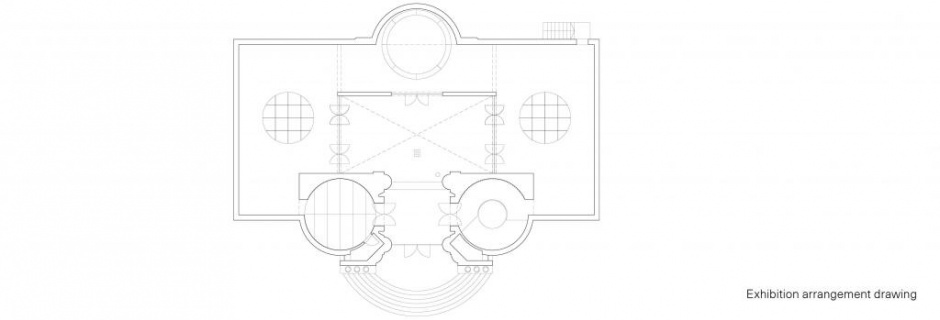about the exhibition
With no recyclable elements on site, our guideline has been the subsequent recyclability of the installation’s components: the technical devices will be used at exhibitions in the Ludwig Museum and the furniture will move to Ellátó.
Reflecting on our practice and the title of the exhibition, we have defined activity points in the pavilion, where we invite the visitors to engage in minor activities
in order to gain information about the project. The first such point is the cylindrical foyer with wooden floor. Here, visitors can access all important information.The hall accommodates a wooden table of four metres in diameter, around which TV screens show segments of a documentary, introducing details of the project. The screening places emphasis on organizing and on the architects’ engagement through the perspectives of each participant.
In the parallel hall, using computers at a similar round table, visitors can take a virtual tour of the Eger building’s interiors and current exhibition. The exhibition featured in the program introduces the activity of the participants of the workshop Activators. Community Architecture: Self-organized Places and the New Scenes of Culture, so that visitors can learn about other projects similar to the one in Eger. With the help of an online application, anyone who is interested can remotely access the exhibition space of the Hungarian pavilion in Venice from Eger or anywhere in the world, and in case an event is taking place at the Ellátó, the screens switch to the live broadcast from Eger, allowing the exhibition’s visitors to observe. With the unusual use of exhibition lighting, we created a unique lighting design above the tables. Activity points are augmented by wall graphics to facilitate interpretation. The wall connecting the two spaces displays traditional tableaux with ideas related to the project, interpreting the process.
We temporarily installed plants in the atrium of the pavilion, as a reference to the omnipresence of the Gárdonyi Garden. Once the exhibition closes, the plants will be moved to the Giardini, in collaboration with the Biennale’s gardeners.
Upon exit, visitors can take a bottle and fill it with water from the tap installed in the atrium. The bottle can be refilled later at any of the city’s drinking fountains.



